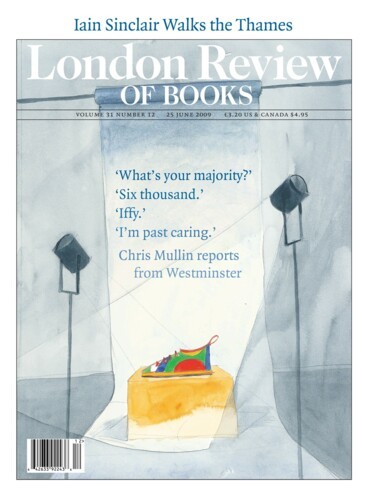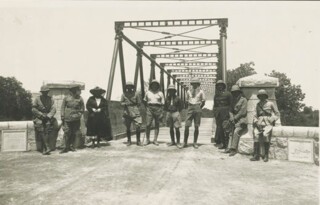After the defeat of the Arabs in June 1967, many Palestinians who’d been driven east over the Jordan River by the fighting tried desperately to return to their homes by slipping back across. The bridges, including the Allenby Bridge, had been damaged, but the patched-up remains were serviceable. The Allenby Bridge crossing was closely guarded, however, and used by the soldiers on Israel’s newest frontier to put people out, rather than allow them in. Palestinian refugees trying to get home from Jordan, as well as groups of fedayeen, preferred to ford the shallow river at dead of night, although 50 IDF ambush parties were stationed along the west bank, instructed to fire on shadows in the water. By September, more than a hundred people had been shot dead trying to return and a thousand had been deported back to Jordan.
On the Jordanian side of the river journalists were counting up to 80,000 refugees in tents, with more being driven in from the west bank as Israeli soldiers fired over their heads to hurry them along. To avoid what was clearly an international scandal in the making, the Israeli government decided to stage a televised return of several thousand Palestinians. There was disagreement among the ministries about how to select the fortunate few. A Foreign Ministry official argued that the key point was demographic: children and women of childbearing age should be kept to a minimum; but in the prevailing view, the older refugees of 1948 were far more undesirable.
Operation Refugee allowed for an intake of 20,000; in the event only 14,000 got in. ‘And so,’ Tom Segev writes in 1967, his extraordinary study of the Six-Day War, ‘Israel missed the great opportunity offered by the victory’ to heal ‘the malignant wound … left by the War of Independence’: in less than two decades, ‘the 600,000 Jews living in Israel at its inception took in more than a million new immigrants. They built hundreds of new communities, including cities, all within the confines of the Green Line. The refugees could have been rehabilitated as well.’ Yet the carefully managed return of a few thousand was enough to allay the world’s misgivings. In Segev’s book, the Israeli poet Haim Gouri stands at the Allenby Bridge to watch, and notes ‘an elderly hajji with a distant look’ who ‘seems to come from ancient pictures of the Palestine that died long ago’.
The original bridge, built in wood and iron, is a part of that vanished past. It was completed in 1918 by the Royal Engineers (Allenby had conquered Palestine in 1917) and destroyed in 1946 by a few well-trained Palmach men laying explosives. The Night of the Bridges was a Haganah exercise designed to cut Palestine off from its neighbours and keep the British on the run. The bridge was repaired after the attack and survived for about 20 years, but after the Six-Day War, a new, similar structure was built. It’s now another relic of the past, one that’s still visible in aerial photographs, standing idly to the side of the four-lane blacktop that spans the (much-depleted) river, courtesy of Nippon Koei consulting engineers and the Japanese government.
The crossing is still referred to as the Allenby Bridge and it remains a place of uncertainty and fear for Palestinians. Did the 14,000 refugees know how they were selected in 1967? Nowadays, in the vast set of hangars at Israeli border control, do people know why they were allowed through in April, say, but not in May? Last month I crossed from Jordan, as one of the guests invited to the Palestine Festival of Literature, a touring event that goes to audiences who wouldn’t be able to attend if the week-long series of readings and workshops were held in a single venue: the West Bank is now a run of cages, dominated by the segregation wall; transferring from one cage to another is very hard for residents; getting in and out of Jerusalem can be harder still.
Even foreigners are treated to an intimation of these difficulties, especially once they cross the bridge and enter the thick press of people waiting to be dealt with by Israeli border security, the great majority Jordanian-based or West Bank Palestinians. Most of the festival people with security-friendly names or neutral birthplaces got through in an hour or more. Others with dubious names (Gurnah, Mahjoub, Ghappour! Vassanji? Hammad!) were held up and questioned for three or four hours. ‘What is the plot of your novel?’ Robin Yassin-Kassab, the author of The Road from Damascus, was asked.
Had it not been names, it might have been clothing or colour of eyes. The occasion felt more like a disagreeable game than anything to do with security. In 2003, Ahdaf Soueif records in Mezzaterra, hundreds of students at Birzeit were prevented from entering the university until, in the end, a checkpoint officer decided that only the ones with gel in their hair would go through. ‘Today,’ he announced, ‘gel will buy you an education.’
Six hours after clambering from the bus onto the west bank of the river, we were back on board, heading for Jerusalem. The visitors who’d been held for questioning, and forced to play at being Palestinians for an afternoon, spoke about the people without British passports or published books to their credit whom they’d seen turned away. The same evening, bright, chilly, windswept, at the Palestinian National Theatre in East Jerusalem, there was another long delay, as the opening event was shut down by Israeli security. Scores of well-dressed people, drinking orange juice and managing their canapés, suddenly found themselves backing away from large men kitted out to fight the Battle of the Bulge or assault the Sunni Triangle. The visitors objected, but Palestinians knew better than to prolong the objection. The audience and performers left the theatre murmuring quietly; it all went off like a disappointing glitch at Hay-on-Wye, but there was a touch of thuggery about it too. As we were about to disperse, the French cultural attaché, who happened to be present, invited the audience and panel to hold the event in the garden of his building in Jerusalem. Where were the stalwarts of the British Council, one of the festival’s funders? It turned out that they’d decided to adopt a low profile, but they were with us on our short walk to the Centre Culturel, carrying the remains of the nibbles and fussing over the clingfilm. A few days and checkpoints later, the final event of the festival, also scheduled at the Palestinian National Theatre, was again closed by special order. This time the British were out in force and the consul made a commendable statement in front of the Israeli police. The evening unfolded in the leafy courtyard of the British Council building.
‘Palestinian’ is a bad word when it’s attached to any event in Jerusalem and ‘Palestinian national’ is worse. Raja Shehadeh has made a translation of the banning order pinned up at the theatre. In the Arabic and presumably the Hebrew, the building is referred to as the Hakawati Theatre – Hakawati is the name of the resident troupe, not the theatre – in order to avoid the P-word. Here is the relentless, commissar component of the cultural war between ‘Arabs’ and Israelis. Rather more grandly, the Arab League recently fired a provocative salvo by nominating Jerusalem capital of Arab culture in 2009. The celebrations were supposed to begin in March, but the Israeli authorities came down hard; the closures of the PNT are just two episodes in a string of bannings, many of which invoke the Oslo Accords. You’d be pressed to find anyone with a high opinion of those.
Like the refugees in Segev’s account, the poet Mourid Barghouti became homeless in 1967. Unlike most of them, he was already out of the country, enrolled as a student in Cairo and then, suddenly, unable to go home to Ramallah. In 1996 he was allowed to return. He was overwhelmed by the extent of the change, and the scars of occupation, at a loss to find points of continuity between the Palestine he remembered and the one before his eyes. Occupation, he wrote, ‘interferes in every aspect of life and of death; it interferes with longing and anger and desire and walking in the street. It interferes with going anywhere and coming back, with going to market, the emergency hospital, the beach, the bedroom, or a distant capital.’ He had re-entered from Jordan at the Allenby Bridge crossing. He was elated and nervous, a panicky list-maker, invoking the many names this transit point had acquired over the years – ‘ the Bridge of Return’, ‘the King Hussein Bridge’, ‘Al-Karama’, ‘Allenby’. Yet for all its associations, he felt it in the end as the ‘boundary between two histories, two faiths, two tragedies’, in a landscape with few consolations: ‘The scene is of rock. Chalk. Military. Desert. Painful as a toothache.’ That’s about how it feels today, if you add the buses backed up at Israeli barriers and lines of people shuffling slowly through layers of Israeli security. To that extent, it’s less a crossing than a long preamble to the way things are done in the Occupied Territories.
Send Letters To:
The Editor
London Review of Books,
28 Little Russell Street
London, WC1A 2HN
letters@lrb.co.uk
Please include name, address, and a telephone number.


